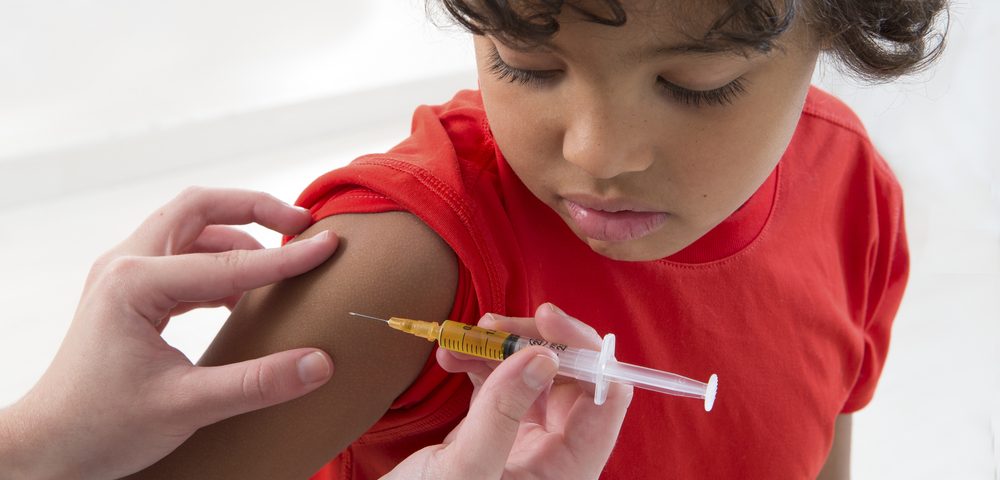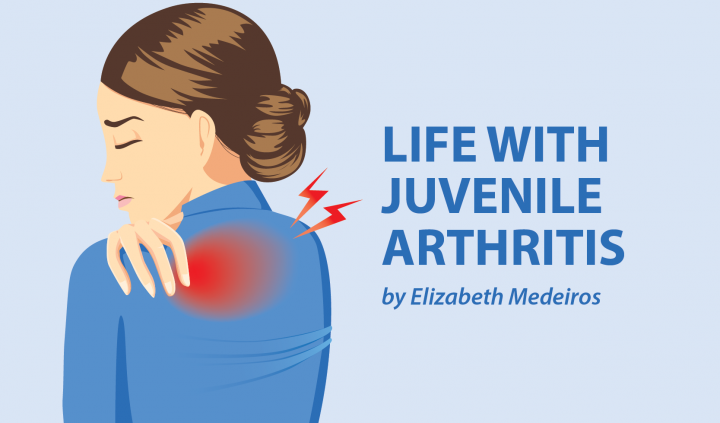Most kids remember finding any excuse to get out of doing homework or chores. I remember using every excuse to get out of “shot” day. Every Friday after school, my mum would bring me to my local doctor’s office for an injection of methotrexate. I dreaded Fridays, and I would get myself very worked up over it. I would fake being sick in an attempt to hold off the injection for a week. Or I’d try to make plans to avoid getting a shot.
Unfortunately, frequent injections are a reality for many children with juvenile arthritis. Some of the treatments for JA, such as methotrexate and biologics, are administered through an injection or IV infusion. Many medicines also require frequent monitoring through blood work. It’s enough to make kids feel like pin cushions.
It’s heartbreaking to watch your child cry in pain and frustration at the sight of yet another needle. Even older kids and teens can feel discouraged and frightened by the procedure. Unfortunately, we’re still years away from some biologics being manufactured in pill form. But in the meantime, there are ways to ease discomfort and make the process easier for you and your child.
Avoiding the pain
Many small ways exist to help an injection hurt less. Blood work is sometimes easier when you are properly hydrated. Pediatric rheumatologists commonly prescribe sprays that numb the skin and make the pinch less intense. A bit of ice on the injection site to numb it can also help tremendously — that’s what I did for years. I found ice more helpful than sprays for Enbrel (etanercept) since it burned a little, but most people have to experiment to see what works.
Recently, I’ve heard about Buzzy. It’s a small machine that uses vibration and cooling to help numb the skin in preparation for a shot. Many parents swear by him. The vibration and cooling help make blood draws and injections painless, and kids love his cute bumblebee appearance. Buzzy is somewhat pricey, so some hospitals and clinics are starting to keep their own on hand.
Distraction
Kids of all age benefit from distraction. One of the best ways to make an injection less painful is to relax, which is easier said than done. It can help to have your small child focus on an activity centered around taking deep breaths, such as blowing bubbles or a pinwheel. Remind older kids and teens to take a deep breath, and point out if they’re tensing.
While I don’t want to endorse a ton of screen time, watching a favorite TV show or movie during an injection can really help. Whether you choose to do injections in front of the TV or pull out your phone for a few minutes during a blood draw, the screen can be a good distraction. Even as an adult, I’ve benefited from being able to watch a nearby TV while having IVs placed.
Make a routine
My mum swears that routines make things easier for children. Having a routine really helped me when I began using Enbrel injections twice a week at home. After dinner and a warm, calming shower, I would do my Enbrel injection in the quiet kitchen. Then, I would watch a favorite TV show before bed. While it didn’t make the shot hurt less, it did help keep me calm during the twice-weekly injections.
Making the injection part of a routine can help relax your child and make them feel more in control. For example, they might pick a show they want to watch during it or decide where they are when they get it (my favorite spot was on the couch). It can also help to offer small rewards like their favorite lunch, a trip to the playground, or even getting a fun Band-Aid afterward.
Keep trying
As rough as injections can be on kids, they can be even harder on parents. It’s especially painful when you’re the one giving the injection. Caregivers shouldn’t neglect themselves. If you’re having a hard time with your child, give yourself a break and try again later. It can be emotionally grueling. For some families, it works better to have someone other than a parent administer injections. It’s possible to have another family member trained to inject your child or have a nurse do it. Teenagers may prefer to do it themselves.
Weekly injections worked out a lot better for me once I began a routine and found ways to relax. But I admit it was still hard at times to grapple with the fact that I needed to give myself injections, possibly for the rest of my life. However, it was always better to be hopeful that the treatment would help. Holding onto the hope that a little pinch can take away the pain of juvenile arthritis is what helped my family and me get through it.
***
Note: Juvenile Arthritis News is strictly a news and information website about the disease. It does not provide medical advice, diagnosis, or treatment. This content is not intended to be a substitute for professional medical advice, diagnosis, or treatment. Always seek the advice of your physician or other qualified health provider with any questions you may have regarding a medical condition. Never disregard professional medical advice or delay in seeking it because of something you have read on this website. The opinions expressed in this column are not those of Juvenile Arthritis News, or its parent company, BioNews Services, and are intended to spark discussion about issues pertaining to juvenile arthritis.


